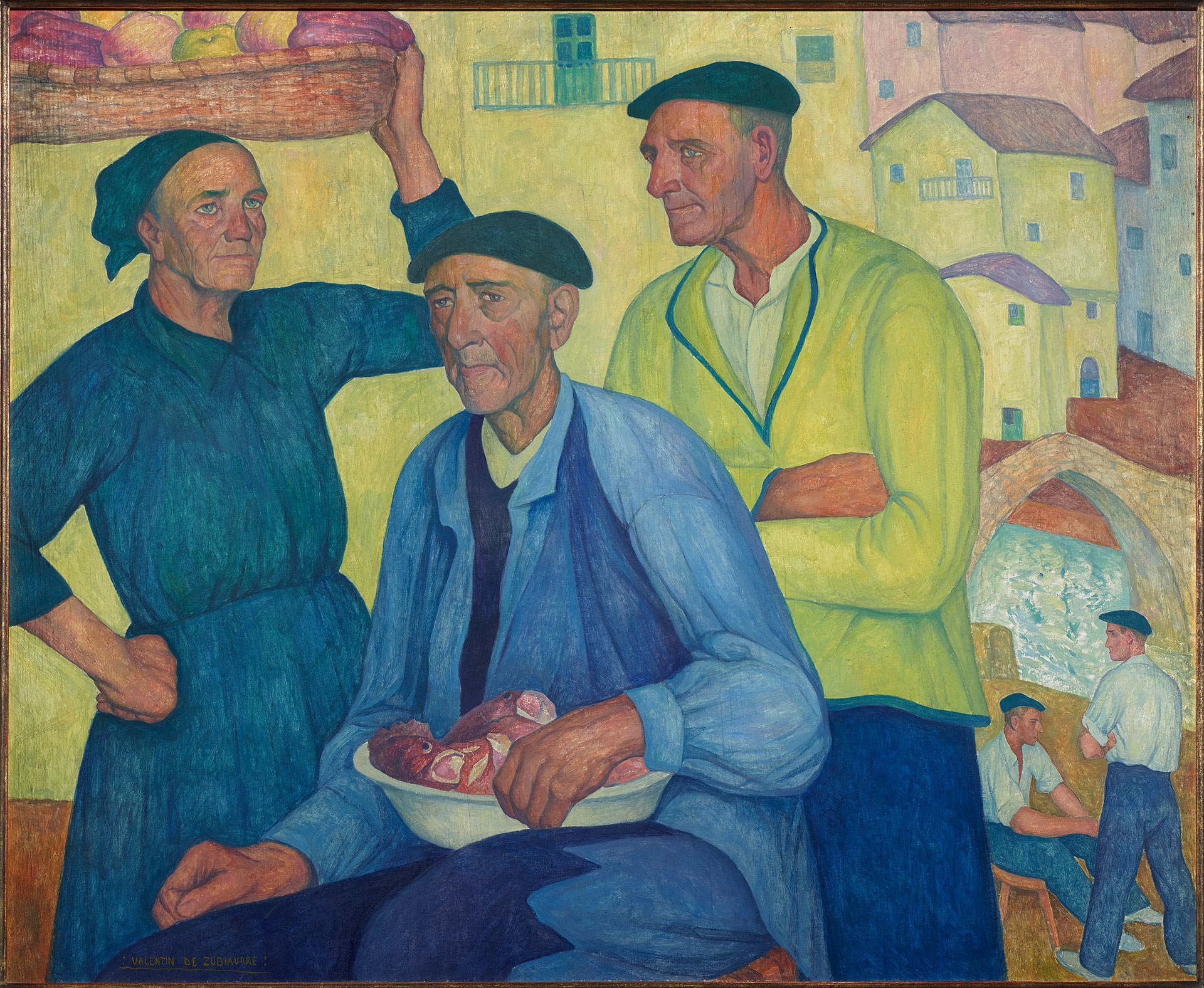
Valentín de Zubiaurre
Basque Villagers
1920-1936
WORK INFORMATION
Oil on canvas, 90 x 110 cm
OTHER INFORMATION
Signed in the lower left-hand corner: "Valentín de Zubiaurre".
The son of a reputed composer and organist from Vizcaya and older brother of Ramón, a fellow painter who, like him, was born deaf, Valentín de Zubiaurre began his studies at the Special School of Painting, Sculpture and Engraving in the Academy of Fine Arts of San Fernando (Madrid) in 1894. Important highlights of his student years included visits to the Museo del Prado, where he examined the works of the great masters, and travels through France, the Netherlands and Italy, financed in part by a grant which the two brothers received from the Provincial Council of Vizcaya. His different sojourns abroad allowed him to study the avant-garde movements and, above all, helped him to perfect his knowledge of Western pictorial tradition, a lesson that was essential to the gestation of his style, along with the influence of some of his more prestigious Spanish contemporaries such as Ignacio Zuloaga.
Zubiaurre achieved great success and renown by participating in various national and international competitions, primarily between 1915 and 1936, and played a leading role on the state-sanctioned art scene of postwar Spain.
His painting essentially reflects both Basque and Castilian customs, celebrations, landscapes and human types which he studied at Segovia, Ondárroa, Garay and other places and reworked in different versions. From the early 1920s until the outbreak of the Civil War, Valentín habitually used a landscape format and tended to repeat the same compositional scheme: a few figures, normally half-length and unconnected or unrelated to each other, arranged in the foreground and silhouetted against a landscape, as we see in Aldeanos vascos [Basque Villagers]. Here the background is only occupied by houses that seem to gradually give way to the three main characters—a woman with a fruit basket on her head and two men, one seated and the other standing with arms crossed—who are positioned off-centre and to the left, leaving the opposite side vacant. That space, as often occurs in other works, contains two men in the middle ground, added to lend a sense of depth to what is otherwise a basically flat composition. The yellowish palette, frequently used in Zubiaurre's paintings of Basque types, dominates the composition given its presence in both the clothing and the background.
Although the artist's characters are eminently descriptive thanks to the careful physiognomic and psychological study of his models, their hieratic pose and rigid treatment, not devoid of symbolic connotations, tends to idealise the subjects, and their timeless quality ultimately turns them into regional types. The severity of Zubiaurre's compositions and the cold tones with which they are usually constructed underscore the classicism of his oeuvre and infuse it with a much more palpable calm and stillness than Ramón's work, making his a highly personal aesthetic within the spectrum of regionalist painting in Spain. [Pedro J. Martínez Plaza]

